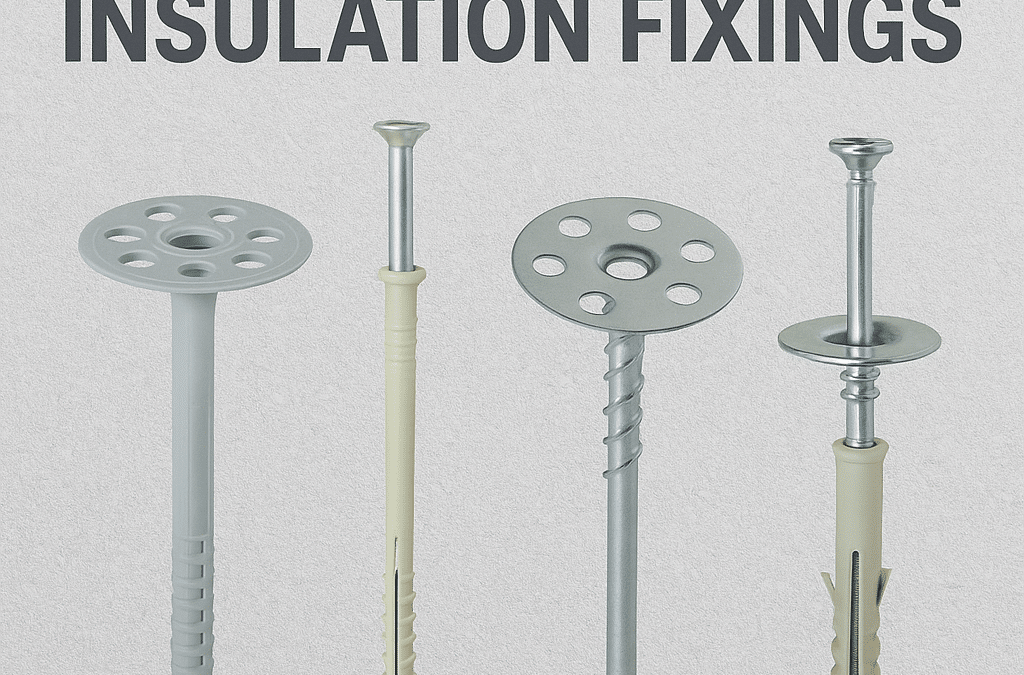External wall insulation fixings play an important role in the durability and effectiveness of an insulation system. Whether you’re a homeowner looking to improve energy efficiency or a contractor handling a retrofit project, understanding the importance of proper fixings is essential for a successful installation.
In this article, I will drill down and explain what external wall insulation fixings are, the various types available, their roles in insulation systems, and how to access free external wall insulation grant through the ECO4 grant scheme in the UK.
What Are External Wall Insulation Fixings?
External wall insulation fixings are mechanical fasteners used to secure insulation boards to the exterior walls of a property. These fixings are typically used in combination with adhesive to ensure the insulation stays firmly attached, even in adverse weather conditions.
These fixings provide long-term stability, prevent board movement or detachment, and help maintain the structural integrity of the insulation system throughout its lifespan.
Why are Fixings Important?
Fixings are very much synonymous with mortar in bricklaying.
It is unbelievable that many people focus solely on the insulation materials and finishes, but fixings are equally vital to the performance of an external wall insulation (EWI) system. Here’s why:
Wind resistance: Proper fixings stop insulation panels from detaching in high winds.
Load distribution: It helps distribute the load evenly, reducing stress on the wall structure.
Moisture protection: Well-installed fixings reduce gaps and prevent water penetration behind the insulation.
Fire safety: Certified fixings comply with fire safety regulations, ensuring peace of mind.
Types of External Wall Insulation Fixings
There are so many types of fixings you can get; however, each is made to work effectively on specific wall materials and insulation board thicknesses. The most common include:
1. Plastic Hammer Fixings
These are lightweight and non-corrosive fixings made from high-strength plastic. Ideal for low-load-bearing substrates like brick or concrete.
2. Metal Fixings with Polyamide Plugs
This is made for higher load-bearing applications; these combine the strength of metal and the insulation benefits of plastic plugs.
3. Spiral Fixings
Mainly designed for polystyrene-based systems, spiral fixings twist into the insulation to create a secure hold without compressing the material.
4. Insulation Washers
Always used alongside screws or anchors, washers increase the surface area to prevent boards from pulling through.
5. Frame Anchors
Ideally designed for installations on older properties with fragile or uneven masonry. Frame anchors provide a deep and robust grip.
How to Choose the Right Fixings
- When selecting external wall insulation fixings, consider the following factors:
- Wall substrate (brick, block, timber, etc.)
- Type and thickness of insulation board
- Local wind load conditions
- Fire performance requirements
- Regulatory compliance (BS EN 1991-1-4)
In ensuring professionalism, installers will conduct a pull-out test before installation to determine the most effective fixing type and number per square metre. Typically, 5–8 fixings per square metre are used depending on the building’s exposure to wind and structural condition.
Installation Tips
- Consider placing fixings at board corners and midpoints to prevent movement.
- Use countersunk heads to ensure a smooth surface for rendering.
- Avoid thermal bridging by using thermal break fixings where possible.
- Don’t easily get rid of the manufacturer’s manual. Always follow the manufacturer’s guidance and building regulation standards.
Do you know that GotoEco can help you access free external wall insulation through the ECO4 grant? A UK government-backed energy upgrade scheme?
If you own your home in the UK, you might be eligible for free external wall insulation under the ECO4 government grant scheme. This initiative aims to help households lower energy bills and reduce carbon emissions by improving home insulation.
Through the scheme, you can receive a full insulation system — including quality fixings, boards, and render — at zero cost if you meet the eligibility criteria.
👉 Check your eligibility now by visiting form and take the first step toward a warmer, more energy-efficient home.
Benefits of Proper External Wall Insulation Fixings
- Enhanced heat retention and energy performance
- Improved durability of the insulation system
- Increased property value and reduced maintenance
- Compliance with ECO4 grant standards
- Lower heating costs year-round
Neglecting the right fixings can result in system failure, additional repair costs, and reduced thermal performance, making it a small but important component of any retrofit project.
Even though it is important, external wall insulation fixings might not be the most talked-about aspect of insulation systems, but they are critical. From improving thermal performance to ensuring structural stability, the right fixings make all the difference in a successful insulation job.
If you’re planning to insulate your home, make sure your installers use the appropriate fixings and follow regulations. And if cost is a concern, good news: the ECO4 grant can help you access a complete external wall insulation system for free.
👉 Apply today at form and enjoy a warmer, more efficient home backed by government support.

